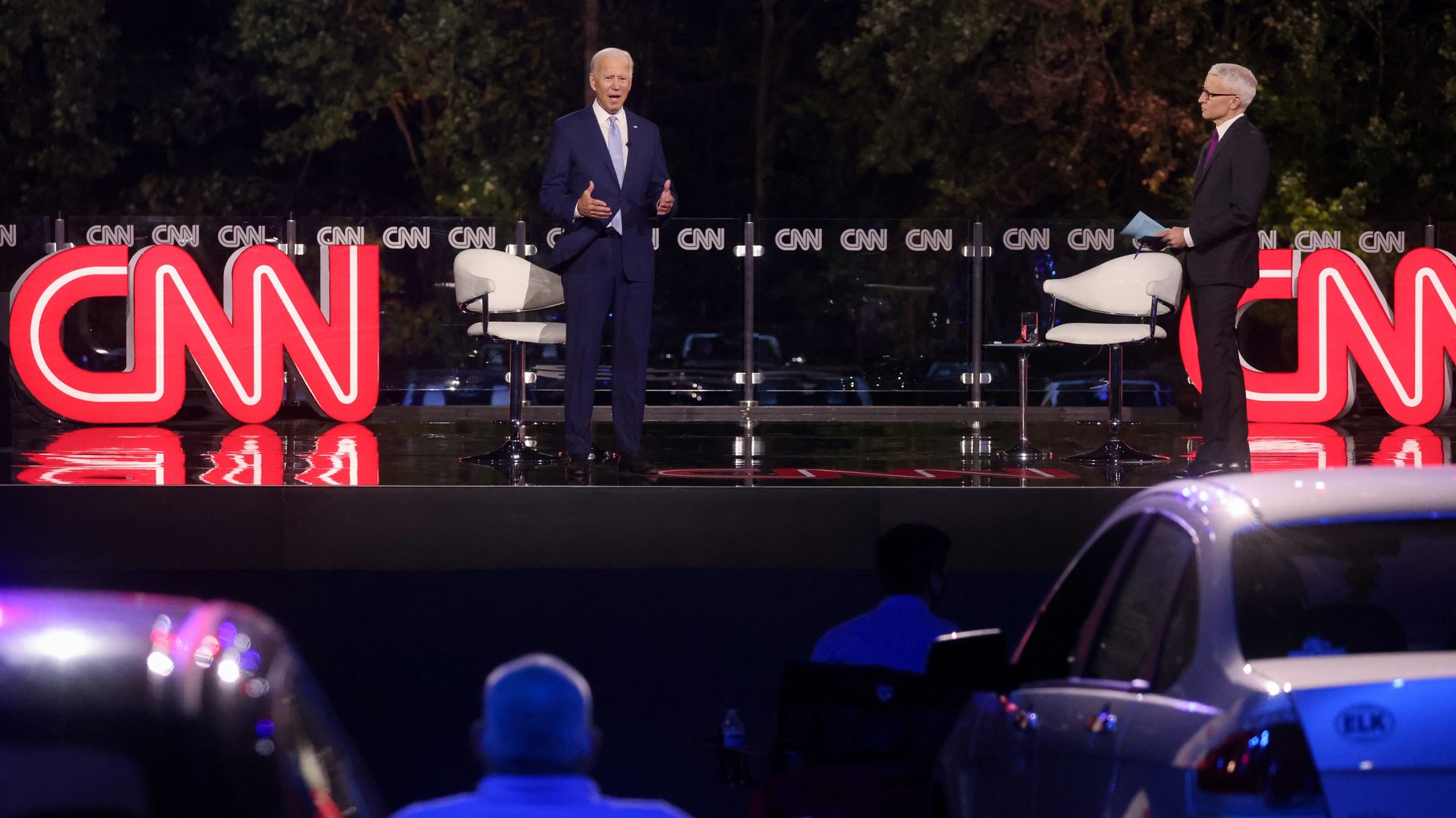How TV networks decided to call the US election
Most US presidential elections have had a clear winner either on election night or the following morning (the 2000 debacle notwithstanding). Networks analyze the data and call the race, the losing candidate concedes, and a winner declares victory.


Most US presidential elections have had a clear winner either on election night or the following morning (the 2000 debacle notwithstanding). Networks analyze the data and call the race, the losing candidate concedes, and a winner declares victory.
That didn’t happen this year. CNN was the first network to call the race for Joe Biden at 11:24 am eastern time on Saturday (Nov. 7)—quickly followed by NBC, CBS, MSNBC, and ABC—and later Fox at 11:40 am. But while it took days, and not hours, for Americans to find out who would be their next president, broadcast and cable news networks were ready to help viewers navigate the election process.
Because of the unprecedented proportion of mail-in ballots and pre-election day voting, which are counted at different times and at very different speeds depending on the state, it appeared at first as though Trump was “winning” several swing states on election night. But his lead evaporated in states like Pennsylvania and Georgia as more votes were counted in the days following Nov. 3. Meanwhile, the Trump campaign said it would demand a recount in Wisconsin and launched a series of lawsuits to challenge Biden’s win in key races. Oh, and Trump himself falsely claimed victory—twice.
It was an unprecedented week for TV networks who had said that, unlike in past elections, they would go out of their way to be candid about what they knew and didn’t know in each moment. This was their plan to do so:
Differentiating between vote type
The role of calling US elections has long been assumed by the television networks, alongside the Associated Press (AP). Elections aren’t really “official” until one candidate concedes to the other, which usually happens on the night of the election or the next day. Elections aren’t official in a legal sense until each state certifies its counts and then the electoral college votes to determine a winner in December. But the public doesn’t wait until then.
Because of Donald Trump’s constant misinformation about the voting process, and his campaign’s mounting attempts to legally challenge legitimate voting methods in certain states, there was more pressure than ever on the networks to get things right this time. They promised to educate viewers that this year’s election would likely not be near finished on election night itself—and that’s what they did.
“The noticeable on-air difference is that you will be seeing and hearing a lot about how the ballots were cast,” NBC News election guru Steve Kornacki told Newsday. “Those swings could be dramatic [and] we want to make people aware of that.”
Kornacki was one of many anchors and analysts on TV networks that went to great lengths to explain to viewers why some state tallies were coming in quicker than others and to reassure them that the delay was normal and not an indicator of widespread fraud, as the Trump campaign was alleging. This was planned: Sam Feist, CNN’s Washington bureau chief, told Variety that the network would repeatedly remind viewers why some states were being called while others weren’t. And virtually every news executive interviewed by Reuters earlier this month stressed their goal was to be as transparent as possible about the process of calling states. The AP, which works with the Fox News decision desk, published detailed explainers of their decisions to call certain states.
How elections are called—and what was different this year
All the major networks work with “decision desks”—panels of election experts and statisticians who operate independently of the newsrooms—to make the ultimate calls. Those desks can’t help it if pundits start wildly speculating, but the networks say they will only call races when the data nerds—not the talking heads—tell them to.
In coordination with the AP and the University of Chicago, Fox News used a new analysis system based on voter surveys, in lieu of the traditional exit polling, which is often inaccurate. Most other networks continued using standard exit polls as part of their election night coverage. This led to one of the more interesting moments of this election—when the AP and Fox called Arizona for Biden on Nov. 4 at 2:50 am while other networks said it was too close to call. (In fact, most still had not done so on Nov. 8.)
NBC News doubled the size of its “vote watch” team, which reported on issues like voting rights and misinformation. ABC and CBS have similar units that focused on voting integrity, keeping viewers updated on how votes are being counted. Every network devoted all of Nov. 4—and much of the remaining days—to election coverage.
A lot of the coverage still looked familiar
Still, despite the change in tone from previous elections, networks didn’t completely overhaul coverage. They still convened giant panels of political analysts to discuss the results. They sent reporters to every swing state, and to each campaign. They had data gurus in front of interactive boards, breaking down votes by county, and comparing those to historical trends.
The 2020 election night coverage looked similar to prior elections. But it may have felt different to viewers, who likely noticed more hedging and a slower, more solemn, more guarded approach to making major pronouncements.
“Our byword of the night is transparency,” Marc Burstein, the producer in charge of election coverage at ABC, told the AP. “We will tell people what we know, we will tell people what we don’t know, and we will tell them why.”